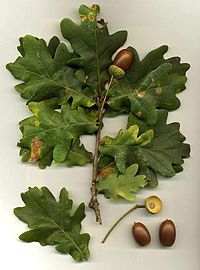
Photo from wikipedia
BACKGROUND The gypsy moth, Lymantria dispar, is one of the main pests of oak forests worldwide and it causes extensive defoliation during its periodic outbreaks. In the Mediterranean area, the… Click to show full abstract
BACKGROUND The gypsy moth, Lymantria dispar, is one of the main pests of oak forests worldwide and it causes extensive defoliation during its periodic outbreaks. In the Mediterranean area, the control of gypsy moth populations in cork oak forests is based on the application of Bacillus thuringiensis serovar kurstaki (Btk) formulations. This research investigated the effects of Btk applications done in two different population development phases on gypsy moth population dynamics. With this aim, the temporal and spatial fluctuation patterns of L. dispar egg density were monitored in cork oak forests treated with Btk-applications from 2004 to 2009 in Sardinia (Italy). RESULTS The applications done during progradation and culmination phases protected equally the oak canopies in the year of application, thus causing a similar decrease in pest population density in the following year. However, the medium-term effectiveness of Btk differed between the two application timings, because only applications in the culmination phase caused a gradual decrease in L. dispar infestations throughout the subsequent years. In contrast, when the application was done during the progradation phase, population density increased again after 2-3 years. Moreover, Btk applications performed in culmination reduced significantly the number of years in which the gypsy moth density was damaging compared to those done in progradation. CONCLUSIONS Our results indicate that Btk applications during the culmination phase were more effective than those in the progradation period, since application in the latter case did not suppress the population but only postponed the outbreak peak by 2-3 years. This article is protected by copyright. All rights reserved.
Journal Title: Pest management science
Year Published: 2019
Link to full text (if available)
Share on Social Media: Sign Up to like & get
recommendations!